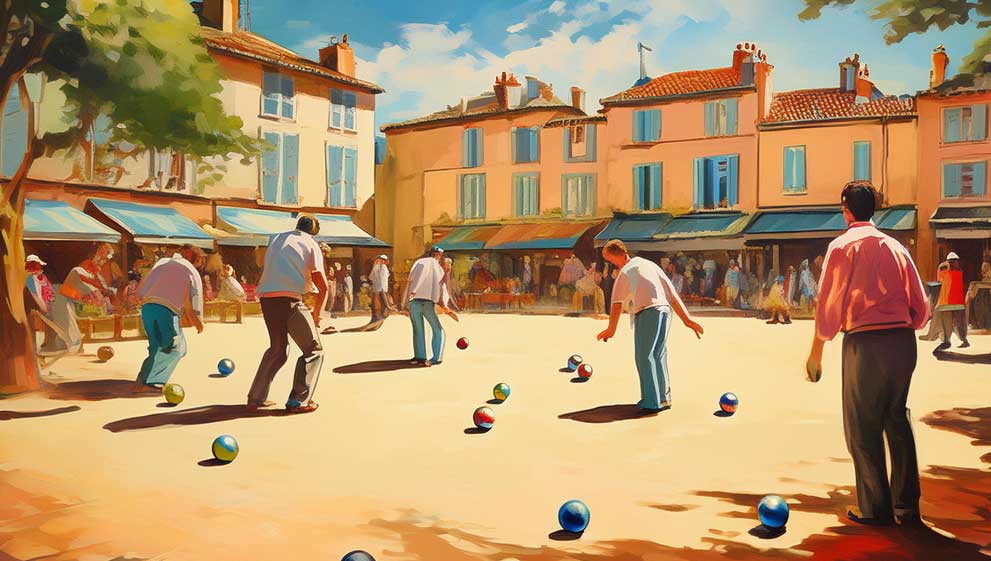Pétanque is a fun, laid-back game where the goal is to get your boules (balls) closer to a small target ball, known as the "jack," than your opponents do. You can either roll or throw your boules to land near the jack or try to knock your opponent’s boules away. The key rule is that you have to stand in a circle with both feet on the ground while you play. The game is best played on hard surfaces like dirt or gravel and is often enjoyed in parks or special areas called Boulodromes.
The game as we know it today was created around 1907 or 1910 in La Ciotat, Provence, France. The name pétanque comes from the Provençal language, meaning "feet fixed," since you play with your feet planted on the ground.
Before the 1800s, people used solid wooden balls for similar games, usually made from boxwood, which is super hard. But in the late 1800s, when nails became easier to make, wooden boules started being covered in nails, creating “nailed boules.” After World War I, technology used for making cannonballs led to the invention of hollow metal boules. The first of these, called "la Boule Intégrale," was made in the 1920s. Not long after, a process was developed to make boules by stamping two pieces of steel into halves and welding them together. This became the standard way to make boules.
Nowadays, boules are made from materials like carbon steel, bronze, aluminum, and stainless steel. Stainless steel boules are smooth, feel great when you release them, and are easy to maintain – just wash them with soap and water to keep them shiny. They’re also the highest quality and usually the most expensive.
The wide range of stainless steel applications can range from everything from Pétanque boules to our stainless steel kitchens and or stainless steel worktops. You know… before writing this article we didn’t know jack about Pétanque
